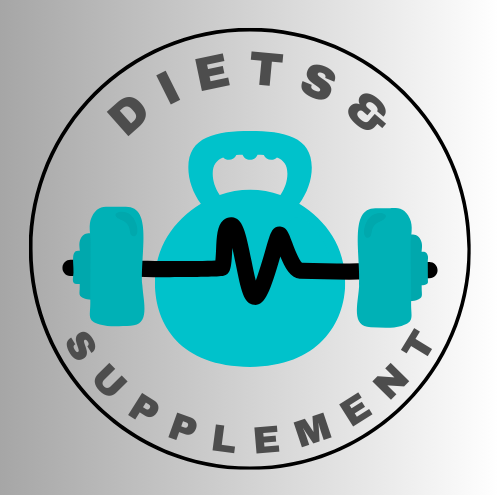 If you’re stepping into the world of fitness, you’ve likely encountered the common question: Is cardio or strength training better for health and fitness? The truth is, both can be incredibly effective, but the answer isn’t one-size-fits-all.
If you’re stepping into the world of fitness, you’ve likely encountered the common question: Is cardio or strength training better for health and fitness? The truth is, both can be incredibly effective, but the answer isn’t one-size-fits-all.
Cardiovascular exercise, also known as aerobic exercise, includes activities like running, swimming, and cycling. It’s famous for improving cardiovascular health, boosting endurance, and assisting in weight management. On the flip side, strength training focuses on resistance exercises, such as weightlifting, to improve muscle strength and bone health.
When considering a people-first approach to fitness, it’s crucial to recognize that fitness is deeply personal. Fitness routines should not just be scientifically sound—they should also be tailored to individual preferences, lifestyles, and goals. While some might want to run marathons, others might prioritize building strength to make daily activities easier or manage health conditions.
Ultimately, the direction you take—cardio, strength training, or a blend of the two—should align with your personal objectives. My goal is to provide you with an authentic perspective on the strengths and potential applications of each fitness style, enabling you to make informed decisions that align with your fitness journey.
=====>Try the 21day smoothie challenge<=====
Stay tuned as we delve into the heart of the matter: a closer look at cardio training and its role in a balanced fitness regimen that supports your health and aligns with your goals.
The Heart of the Matter: A Deep Dive into Cardio Training
Understanding what cardio training entails is crucial to appreciating its role in a balanced fitness regimen. At its core, cardiovascular, or cardio, training is any form of exercise that raises your heart rate and keeps it elevated for a period. This includes a wide array of activities such as running, cycling, swimming, or even brisk walking. It’s the cornerstone of any program aimed at improving cardiovascular health.
The benefits of engaging in regular cardio workouts extend beyond mere heart health. For one, it’s incredibly effective at burning calories, which can be a significant factor in weight loss and management. It’s also instrumental in increasing lung capacity, improving blood flow, and releasing endorphins, the body’s natural mood lifters.
Moreover, as you stick to a cardio routine, you’ll likely notice improvements in your stamina and endurance. This can have a profound effect on your day-to-day vitality and can increase your ability to perform various physical tasks with ease. Cardiovascular exercise has also been linked with reduced risks of chronic diseases such as type 2 diabetes, high blood pressure, and stroke.
Experts in cardiology and sports medicine endorse regular cardio exercise for its extensive health benefits. These professionals highlight that incorporating cardiovascular training into your schedule even for short sessions can lead to long-term health improvements. The advice is clear and simple: for a healthier heart and a more vibrant life, make cardio a consistent part of your fitness journey.
Powering Up with Strength Training: More Than Just Muscle
When I speak about strength training, you might envision bulging muscles and heavy weights. But there’s much more to it. Strength training, also known as resistance training, is a series of exercises designed to improve muscular fitness by exercising a specific muscle or muscle group against external resistance.
Regular strength training is a key player in maintaining bone density and supporting metabolic rate. It triggers a response from bone cells to lay down new growth, warding off conditions like osteoporosis. Increased muscle mass from strength training also means a higher resting metabolic rate, which can aid in weight control.
It’s a common myth that strength training is only for young men looking to ‘bulk up.’ However, this form of exercise is beneficial for all genders and ages. It enhances body mechanics, reducing risk of falls in older adults. Moreover, women benefit significantly, as it helps in maintaining muscle mass during weight loss and can alleviate symptoms of menopause.
Authorities in the field of fitness emphasize that strength training should not be an afterthought but an integral part of a workout regimen. Research shows it can improve mental health, cardiovascular fitness, and even cognitive function. By incorporating multiple muscle groups and compound movements, strength training offers a comprehensive workout that extends beyond muscle conditioning.
Balancing Act: Finding Your Personal Fit in the Cardio-Strength Spectrum
Your fitness journey is uniquely your own. So when it comes to settling the ‘cardio vs. strength training’ debate, remember that the best workout for you depends on your personal health goals, preferences, and circumstances. There is no one-size-fits-all answer.
For a well-rounded approach to fitness, consider incorporating elements of both cardio and strength training into your routine. This can aid in enhancing overall health, from improving heart function to strengthening muscles and bones.
Take inspiration from individuals who have tailored their fitness plans to suit their lifestyles. Their success stories often feature a mix of both training types, adapted to their schedules and changing needs.
Consulting with fitness professionals can also be an invaluable step. They can offer advice that is grounded in experience and tailored to your specific requirements, helping you to create a workout plan that is both effective and enjoyable.
